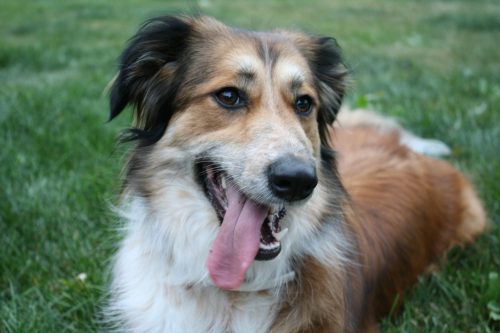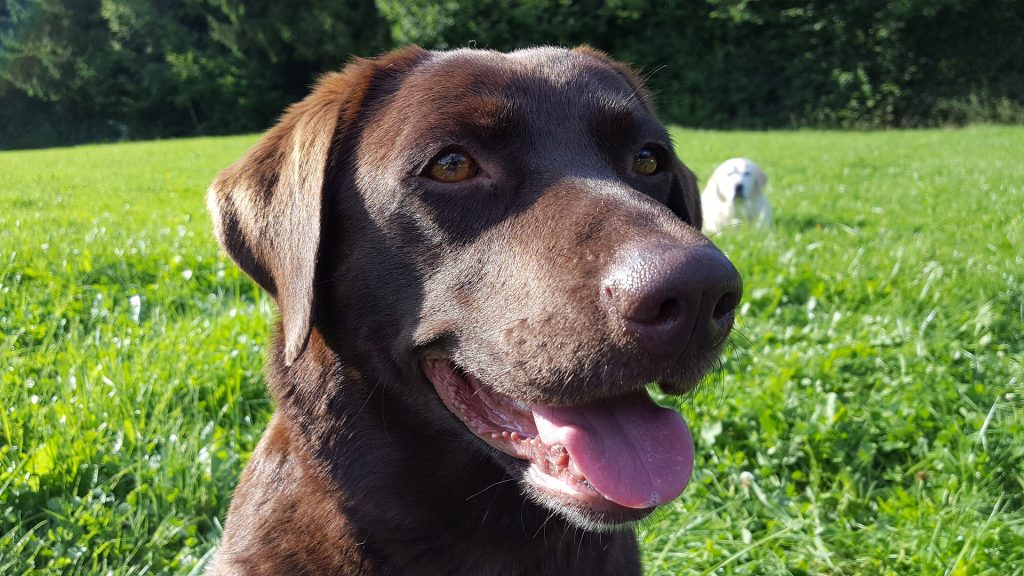When becoming a dog owner, many people do not consider the myriad of health conditions their dog can develop over the course of his lifetime. Therefore, when symptoms arise, they may be met with confusion and concern. One condition it is important to have some baseline knowledge of as a dog owner is Progressive Retinal Atrophy (PRA).
By possessing the necessary knowledge of what Progressive Retinal Atrophy is, its symptoms, how to diagnose it, and potential treatment options, you will be able to quickly get your dog the help he needs should he ever begin developing the symptoms of Progressive Retinal Atrophy.
What is Progressive Retinal Atrophy in Dogs?

Progressive Retinal Atrophy, which is also sometimes known as progressive rod and cone degeneration (PRCD), is a group of degenerative eye disorders in dogs that lead to blindness in both eyes. The retina, which is a thin membrane that covers the back of the eyes, is essential to vision. The retina is the portion of the eye that absorbs and reflects light, which plays a vital role in how a dog’s eye is capable of seeing the world around them.
Within the retina of the eye, there are rod cells, and Progressive Retinal Atrophy causes these rod cells within the retina to become programmed to die. Because the rod cells within the retina allow dogs to be able to see within settings with dim lighting, one of the first symptoms of Progressive Retinal Atrophy is known as night blindness, which refers to poor vision in dim light.
As the rod cells die within the retina, an excessive amount of oxygen develops. This increase in the presence of oxygen results in the death of cone cells due to oxidative damage from the oxygen. Progressive Retinal Atrophy occurs simultaneously within both eyes, but it rarely causes pain and is often a condition that dogs adjust to rather quickly.
Symptoms of Progressive Retinal Atrophy
As with any condition, there are a number of symptoms that signify the onset of PRA in dogs. Some of the most common symptoms of Progressive Retinal Atrophy in dogs include:
- Difficulty navigating spaces in dim lighting (night blindness)
- Dilated pupils
- Increased sheen in the appearance of the eye (this may appear green in hue in some lights)
- Tripping or stumbling over objects
- Unwillingness to climb or navigate stairs
- Reluctance to climb up onto or off of furniture when it is dark
- Delayed pupillary responses to light
- Cataracts
- Running into walls and furniture
- Display of a behavior in which your dog puts his paws in the air in an attempt to gauge surroundings
- White or gray discoloration on the surface of the eye, which may appear cloudy at first and become completely opaque over time
Diagnosing Progressive Retinal Atrophy in Dogs

If you begin to notice your dog displaying the symptoms listed above, it is best to immediately bring him into a licensed veterinarian to seek out a diagnosis. In order to diagnose Progressive Retinal Atrophy, your veterinarian will need to conduct a series of extensive eye examinations.
In many cases, general practice veterinarians will refer patients to a veterinary ophthalmologist so that their dog receives an examination from a specialist. The veterinary ophthalmologist will perform a number of diagnostic tests in order to achieve a definitive diagnosis. Often a normal eye exam will denote the presence of Progressive Retinal Atrophy, but to confirm this theory, a veterinary ophthalmologist will often use an electroretinogram to measure the retina’s ability to respond to light.
During this test, the veterinary ophthalmologist will place an electrode on the surface of the dog’s cornea and on the skin around the eye. The results from this test are definitive and will yield a diagnosis.
Treatment Options for Progressive Retinal Atrophy
Progressive Retinal Atrophy always causes bilateral vision loss and results in complete loss of vision, though the loss of vision progresses at a different rate between individual dogs. While there are no definitive treatment options available at this time, veterinarians are working to find treatment options to help slow the loss of vision and eventually prevent it.
This type of retinal degeneration eventually results in blindness, and while there are no treatment options or cures at this point in time, there are steps you can take to help your dog navigate the world without his vision, such as keeping furniture in the same place, showing him paths around the house, and establishing structured routines. These small steps will help your dog adjust to his loss of vision and continue to live a happy and healthy life.




